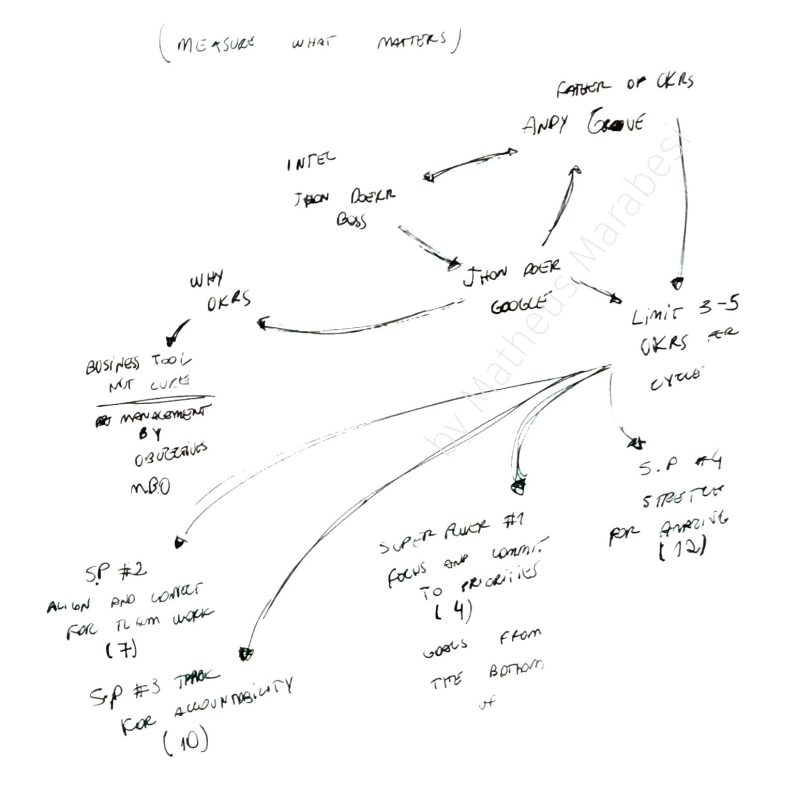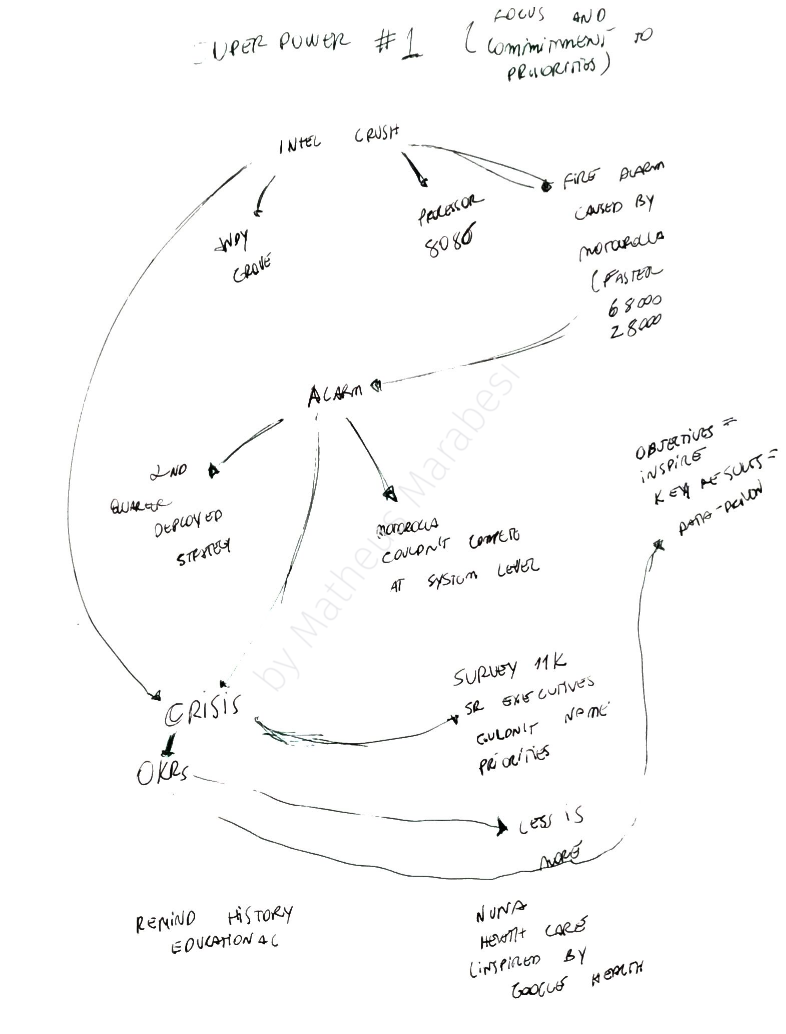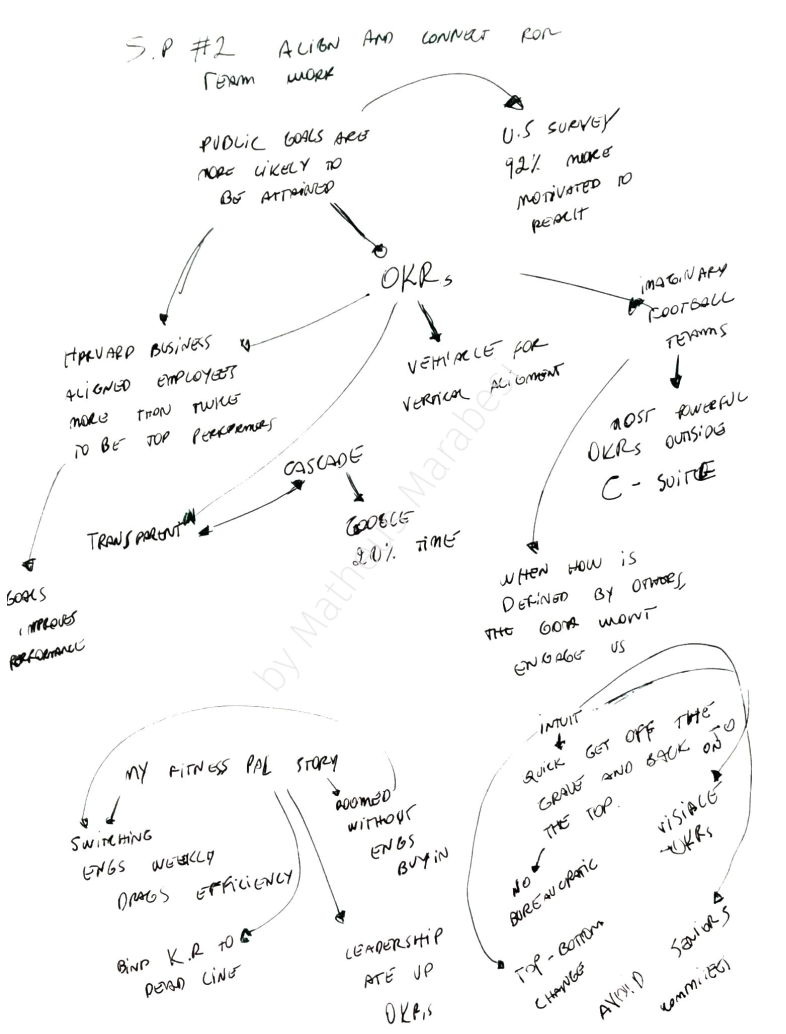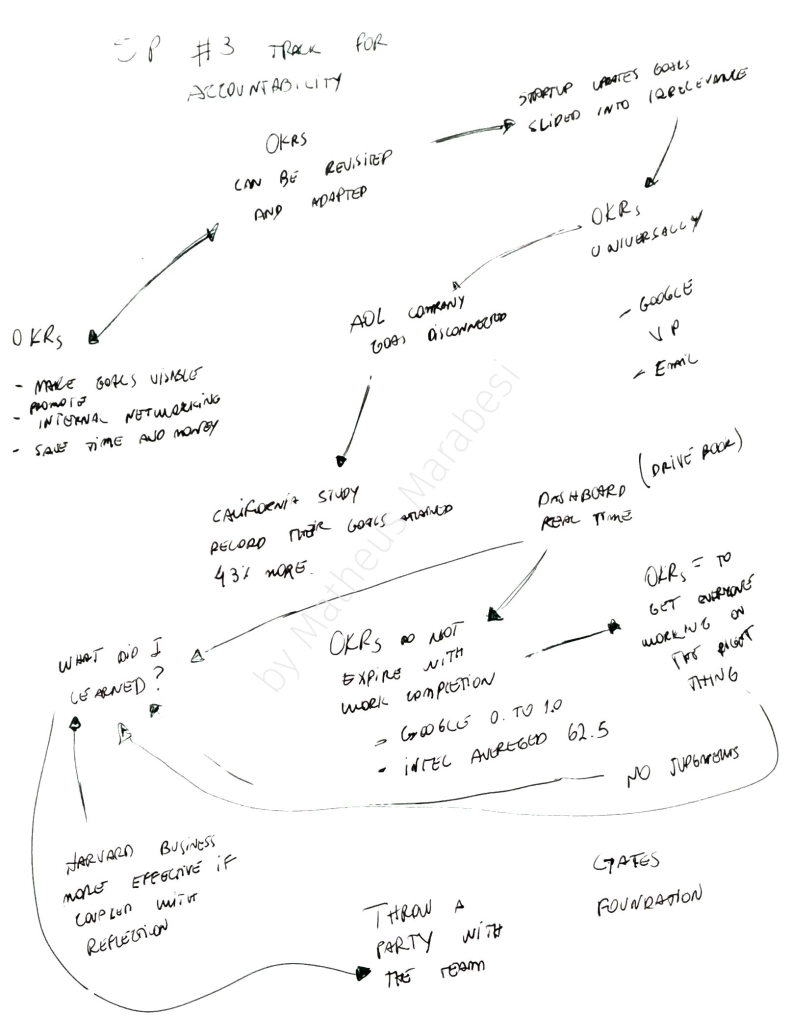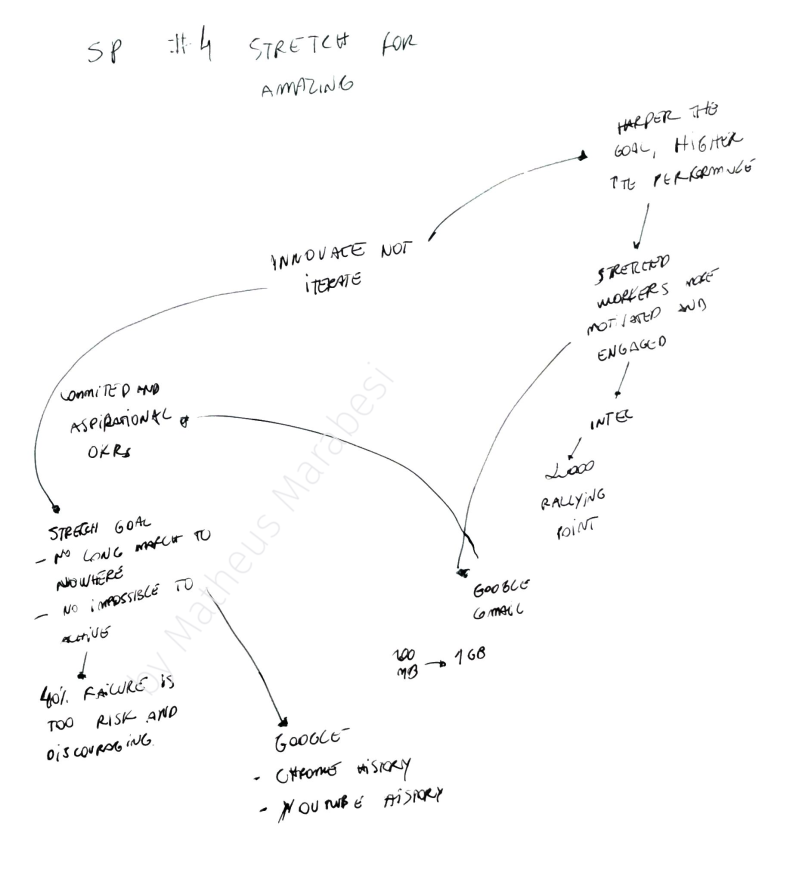Measure what matters (OKRs) - The Simple Idea that Drives 10x Growth - Review
The content here is under the Attribution 4.0 International (CC BY 4.0) license
TLDR
OKRs stand for Objectives and Key Results. They’re ambitious goals (think “launch a new product”) paired with measurable ways to track progress. This simple framework keeps everyone rowing in the same direction. It clarifies priorities, gets everyone on the same page, and motivates teams by making goals public. But OKRs aren’t set in stone. They need to adapt as things change to avoid becoming irrelevant. By keeping OKRs fresh and focused, businesses can harness their power to achieve amazing things.
Introduction
Measure what matters is a collection of success stories from different businesses that adopted OKRs (Objective-Key-Results) to get people aligned and focus on what matters the most for the business (Doerr, 2018). Believe it or not, this is not as easy as we think, as we will see later on companies struggle with that.
John Doer worked at Intel when he was first introduced to OKRs by Andy Grove (as he labeled him the OKRs father) and in this book, he describes what the OKRs are made of and why you should use them. OKRs came to improve on the gap that traditional approaches to business measurement tackled, as an example that is given in the book M.B.O (Management by Objectives).
The book is distributed in two parts, the first being used to introduce and describe OKRs in four different sections. The second focuses on culture. Here we will go over the first part only.
SuperPower 1: Focus and commit to priorities
As organizations grow, getting people focused and committed to a single objective is a difficult task. Measure what matters referenced research where data shows that senior executives couldn’t name their priorities.
To depict that this was not Intel’s case, the author used an example of when Motorola launched a processor that was faster and Intel was losing market share. To react in such a scenario Intel (led by Andy Grove) launched a strategy shifting the priorities and the focus from everyone in the company in weeks.
SuperPower 2: Align and connect for teamwork
Aligning people and connecting with them to build something together is challenging, first comes communication, without clear communication and understanding from both parties is not possible to achieve a common goal. A study by Harvard also found that aligned employees have the chance to be more than twice to be top performers. ORKs on the other hand can be used to help with communication for a vertical alignment in the company.
The second point is motivation, each person has a different motivation and different perceptions about work, life and what motivates people to do a great job. A United States survey found that 92% of people feel more motivated to react to goals when they are publicly available and as they are public, they are more likely to be attained.
SuperPower 3: Track for accountability
Accountability is the superpower that aims to share the responsibility of achieving a given objective with the team. For such, the first thing to have in mind is that OKRs are adaptable and not set in stone.
As such it prevents OKRs to stale for the company, this is a scenario that startups can run easily as they are known for moving fast. Nevertheless, in the book, big company AOL also went through this issue and saw that the OKRs were disconnected from the company goals.
This also happened in Google, in which the Vice President had to frequently remind workers that they needed to build their OKRs and move them forward. The attributes of OKRs that are accountable and also might avoid those scenarios of disconnectivity of the company have the following attributes:
- Make them visible (Dashboards with metrics and progress), and share them in the internal network of the company.
- Get everyone working on the right thing (answer the question: what did we learn?)
- Save time and money.
SuperPower 4: Stretch for amazing
Stretch goals are the ones that focus on the next level of performance, in the book as the author said the harder the goal higher the performance (which seems controversial), but also an argument for using them when the focus is to innovate and not iterate.
When working on stretched goals workers are more motivated and engage with the goal of the company. As an example, John Doe used the Intel example and called that the rally point and Google Gmail space.
Therefore, as those goals are challenges it is important to take into consideration the following:
- No long march to nowhere.
- Not impossible to achieve (Google Chrome history, YouTube history).
The commendation is to use stretched goals that are less than 40% of failure, if that is the case, they become discouraging and high risk.
Related subjects
References
- Doerr, J. (2018). Measure what matters: OKRs: The simple idea that drives 10x growth. Penguin UK.
Changelog
- Apr 15, 2024 - Added TLDR section
- Nov 11, 2023 - Added a link to “OKRs in Software Engineering a summary by Abi Noda” in the related subjects section
Goodreads review
 Measure What Matters: How Google, Bono, and the Gates Foundation Rock the World with OKRs by John E. Doerr
Measure What Matters: How Google, Bono, and the Gates Foundation Rock the World with OKRs by John E. Doerr
My rating: 4 of 5 stars
Measure What Matters is a collection of success stories from different businesses that adopted OKRs (Objective-Key-Results) to get people aligned and focus on what matters the most for the business.
John Doer worked at Intel when he was first introduced to OKRs by Andy Grove (as he labeled him the OKRs father) and in this book, he describes what the OKRs are made of and why you should use them.OKRs came to improve on the gap that traditional approaches to business measurement have, as an example that is given in the book M.B.O (Management by Objectives).
The book is distributed in two parts, the first being used to introduce and describe OKRs in four different sections as well as successful case studies with companies in the industry. The second focuses on culture, and how to create a culture that will support OKRs.
More to follow at https://marabesi.com/reviews/measure-…
View all my reviews
